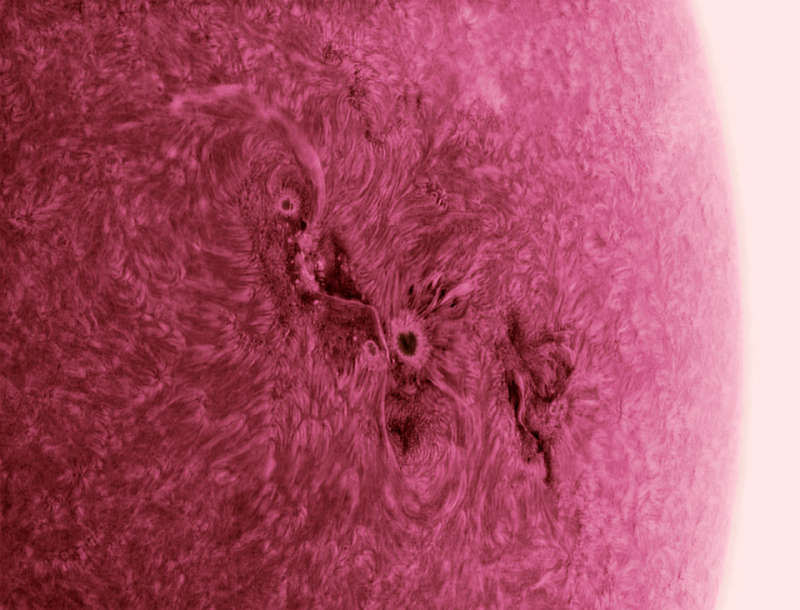Credit & Copyright: Alan Friedman
(Averted Imagination)
Explanation:
It's one of the
baddest
sunspot regions in years.
Active Region 1429 may not only look, to some, like an
angry
bird --
it has thrown off some of the most
powerful flares and
coronal mass ejections of the current
solar cycle.
The extended plumes from these explosions have even rained particles on the Earth's
magnetosphere that have resulted in
colorful
auroras.
Pictured above,
AR 1429 was captured in great detail in the Sun's chromosphere three days ago by
isolating a
color of light
emitted primarily by hydrogen.
The resulting image is shown in inverted false color with dark regions being the
brightest and hottest.
Giant magnetically-channeled
tubes of hot gas, some longer than the Earth, are known
as
spicules
and can be seen
carpeting
the chromosphere.
The light tendril just above
AR 1429 is a cool
filament
hovering just over the active sunspot region.
As solar maximum
nears in the next few years, the increasingly wound and twisted
magnetic field of the Sun may create even more
furious
active regions that chirp even more
energetic puffs of solar plasma into our Solar System.
Gallery:
See images of the latest planetary conjunction
1999 2000 2001 2002 2003 2004 2005 2006 2007 2008 2009 2010 2011 2012 2013 2014 2015 2016 2017 2018 2019 2020 2021 2022 2023 2024 2025 |
Январь Февраль Март Апрель Май Июнь Июль Август Сентябрь Октябрь Ноябрь Декабрь |
NASA Web Site Statements, Warnings, and Disclaimers
NASA Official: Jay Norris. Specific rights apply.
A service of: LHEA at NASA / GSFC
& Michigan Tech. U.
|
Публикации с ключевыми словами:
Sun - sunspot - Солнце - Солнечные пятна
Публикации со словами: Sun - sunspot - Солнце - Солнечные пятна | |
См. также:
Все публикации на ту же тему >> | |
Мнения читателей [2]
